FROM PEBBLE BEACH TO PALM BEACH
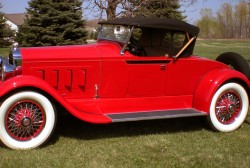
FROM PEBBLE BEACH TO PALM BEACH: The journey of a Roaring ’20s muscle car
The American “muscle car” didn’t become an icon of popular culture until the 1960s, yet almost from the beginning of the motor car age, automakers enhanced vehicle performance by cramming engines from their largest cars into the smallest possible chassis.
In 1929, a Packard sales brochure proclaimed just such a car.
 “To the select few who frankly love the hum of racing car power throbbing to be unleashed at a toe-touch, the 1929 Packard Eight Speedster is dedicated,” the brochure declared. “Fast in acceleration, swift in deceleration, this motor car is yet a complete and practical automobile.”
“To the select few who frankly love the hum of racing car power throbbing to be unleashed at a toe-touch, the 1929 Packard Eight Speedster is dedicated,” the brochure declared. “Fast in acceleration, swift in deceleration, this motor car is yet a complete and practical automobile.”
The brochure went on to detail and extoll the components used in the car’s assembly, adding that, “Like the rare jewel that it is, the Packard Eight Speedster is limited to a small clientele. Those who thrill to the zest of swift travel will find it an excellent companion for the Broad Highway and the Open Road, with top down and wind whipping free.”
Automotive historians report that for the 1929 model year, Packard produced more than 26,000 of its Sixth Series 626 vehicles. However, only 70 of them were Packard 626 Speedsters.
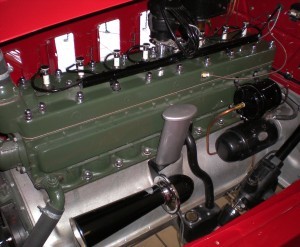 A smooth-running 384ci straight-8 engine lies under the Packard’s hood.
A smooth-running 384ci straight-8 engine lies under the Packard’s hood.
To create the Speedsters, Packard started with its standard 126-1/2-inch wheelbase chassis, but installed on that frame one of the company’s 384ci straight-8 engines, which otherwise were reserved for use on the longer 640-model chassis.
The standard 626 model carried a 319ci straight-8 that produced 90 horsepower. The 640s got the larger engine tuned to 105 horsepower. But for the Speedsters, the big L-head powerplant was equipped with a high-lift cam, high-compression head, metric plugs and high-speed vacuum pump, all of which boosted its output to 130 horsepower.
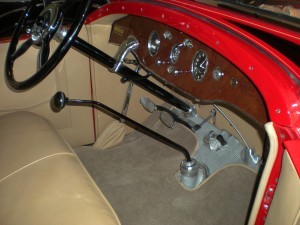 Instead of the standard three-speed transmission, Speedsters could be equipped with a four-speed manual gearbox. They also got a 3:31:1 rear axle, while standard 626s carried 4.38 or even 5.08 gearing.
Instead of the standard three-speed transmission, Speedsters could be equipped with a four-speed manual gearbox. They also got a 3:31:1 rear axle, while standard 626s carried 4.38 or even 5.08 gearing.
To help the Speedster achieve its full speed potential, the exhaust system included a back pressure-reducing cut-out system. To enhance aerodynamics, the spare wheel was mounted at the rear of the car, and such commonly ordered options as windshield wings were not offered.
To enhance aerodynamics, the spare wheel was mounted at the rear of the car.
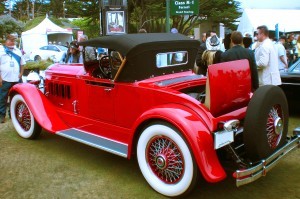 Speedsters were produced with custom-built Runabout or Phaeton bodies, the coaches created by taking some 14 inches out of bodywork used for 640 roadsters or phaetons. For the Runabout, the door to the usual golf club storage area was eliminated but the rumble seat was retained.
Speedsters were produced with custom-built Runabout or Phaeton bodies, the coaches created by taking some 14 inches out of bodywork used for 640 roadsters or phaetons. For the Runabout, the door to the usual golf club storage area was eliminated but the rumble seat was retained.
Once a 626 Speedster was ordered — at a cost of $5,000, more than double the cost of a standard 626 and even more than all but the top-of-the-line 640 models — Packard promised delivery in 30 to 60 days a car capable of reaching 100 miles per hour.
The 1929 Packard 626 Speedster (Lot #397) being offered at Barrett-Jackson’s Palm Beach sale was the subject of a four-year restoration that started in 2008 and wasn’t finished until early in 2013. Later that same year, the car, in brilliant crimson red paint, tan Connelly leather interior and black Stayfast canvas top (and side curtains), was displayed on the show field at the 63rd annual Pebble Beach Concours d’Elegance.
The inside of this Packard is as immaculate as the outside, highlighted by tan Connelly leather upholstery and a 4-speed manual transmission.
The car originally was delivered in August 1929 to the Carlye Nibley Packard dealership in Long Beach, California. The consignor believes it was sold by the dealership to a U.S. senator from Nevada, or perhaps to his daughter.
There is a gap in the car’s known history, and even a question whether it was an original Speedster or if at some point a Speedster engine, a 626 chassis and modified 640 bodywork were united.
Automotive historians say only one fully verified 1929 Packard 626 Speedster is known to still exist and that it is part of The Henry Ford Museum collection.
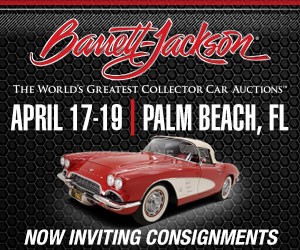 The consignor of this car acknowledges that he isn’t sure of the car’s history, except that he found it in rough condition in the upper Midwest, has owned it for more than 20 years, and can document its thorough restoration and its completed Speedster equipment package. That the car was accepted at Pebble Beach speaks well for its quality. And while the car was on the fairway beside Monterey Bay, the consignor says, “Everybody from Don Williams to Jay Leno to the Keno Brothers stopped me to tell me how wonderful the car was.”
The consignor of this car acknowledges that he isn’t sure of the car’s history, except that he found it in rough condition in the upper Midwest, has owned it for more than 20 years, and can document its thorough restoration and its completed Speedster equipment package. That the car was accepted at Pebble Beach speaks well for its quality. And while the car was on the fairway beside Monterey Bay, the consignor says, “Everybody from Don Williams to Jay Leno to the Keno Brothers stopped me to tell me how wonderful the car was.”
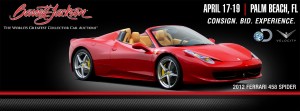 This article by Larry Edsall appears in the Spring 2015 issue of The Barrett-Jackson Experience magazine. To order your copy or subscribe, click here or visit www.shopbarrettjackson.com.
This article by Larry Edsall appears in the Spring 2015 issue of The Barrett-Jackson Experience magazine. To order your copy or subscribe, click here or visit www.shopbarrettjackson.com.

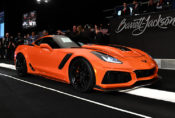 Sensational Supercars Led The Finale At Barrett Jackson Palm Beach Auction
Sensational Supercars Led The Finale At Barrett Jackson Palm Beach Auction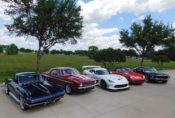 Barrett-Jackson To Offer Up Chip Watkins Collection at Palm Beach Auction
Barrett-Jackson To Offer Up Chip Watkins Collection at Palm Beach Auction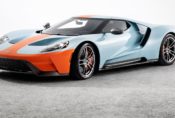 2019 Ford GT “Gulf” Heritage Edition VIN 001 To Be Auctioned in January
2019 Ford GT “Gulf” Heritage Edition VIN 001 To Be Auctioned in January